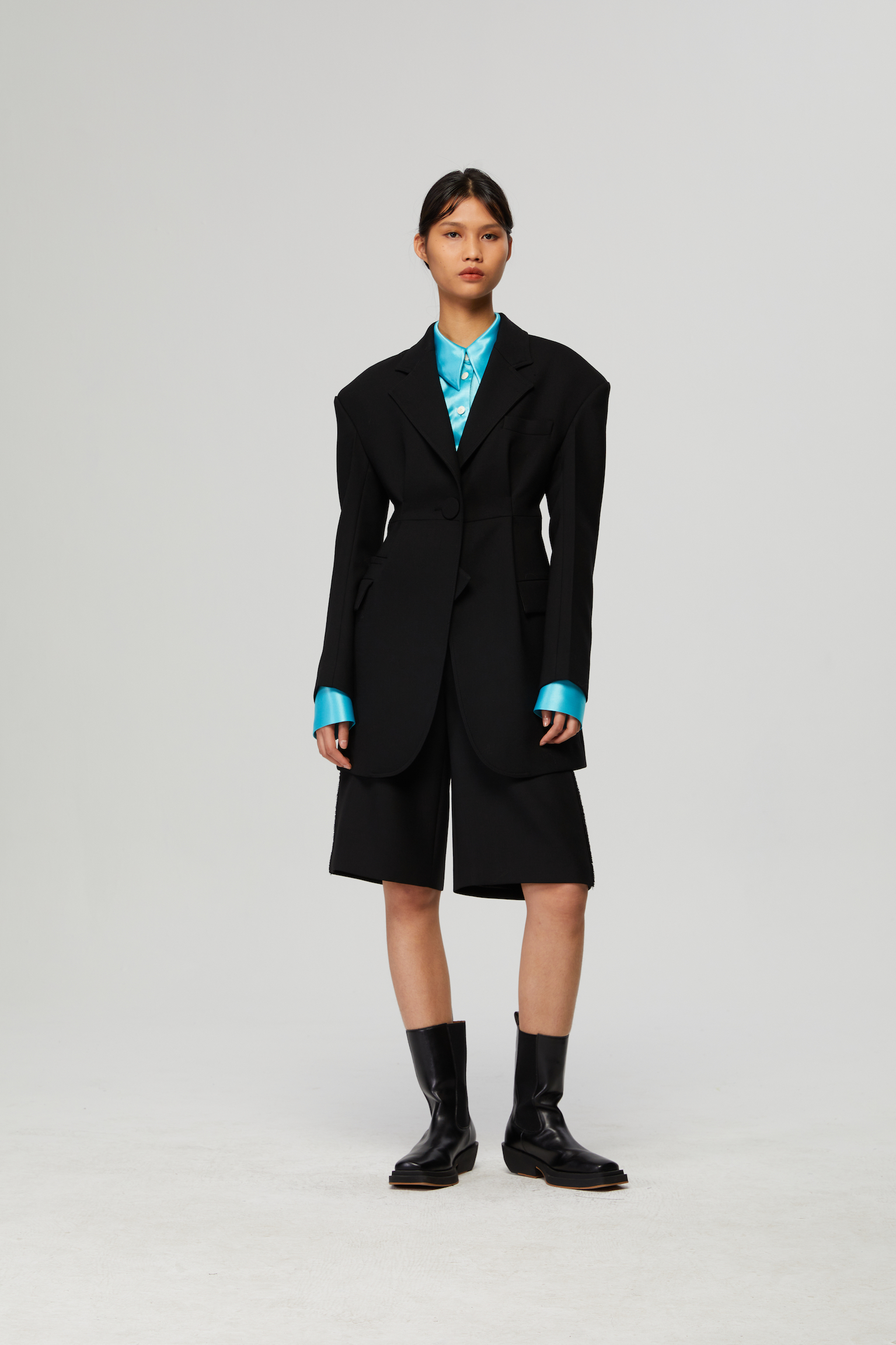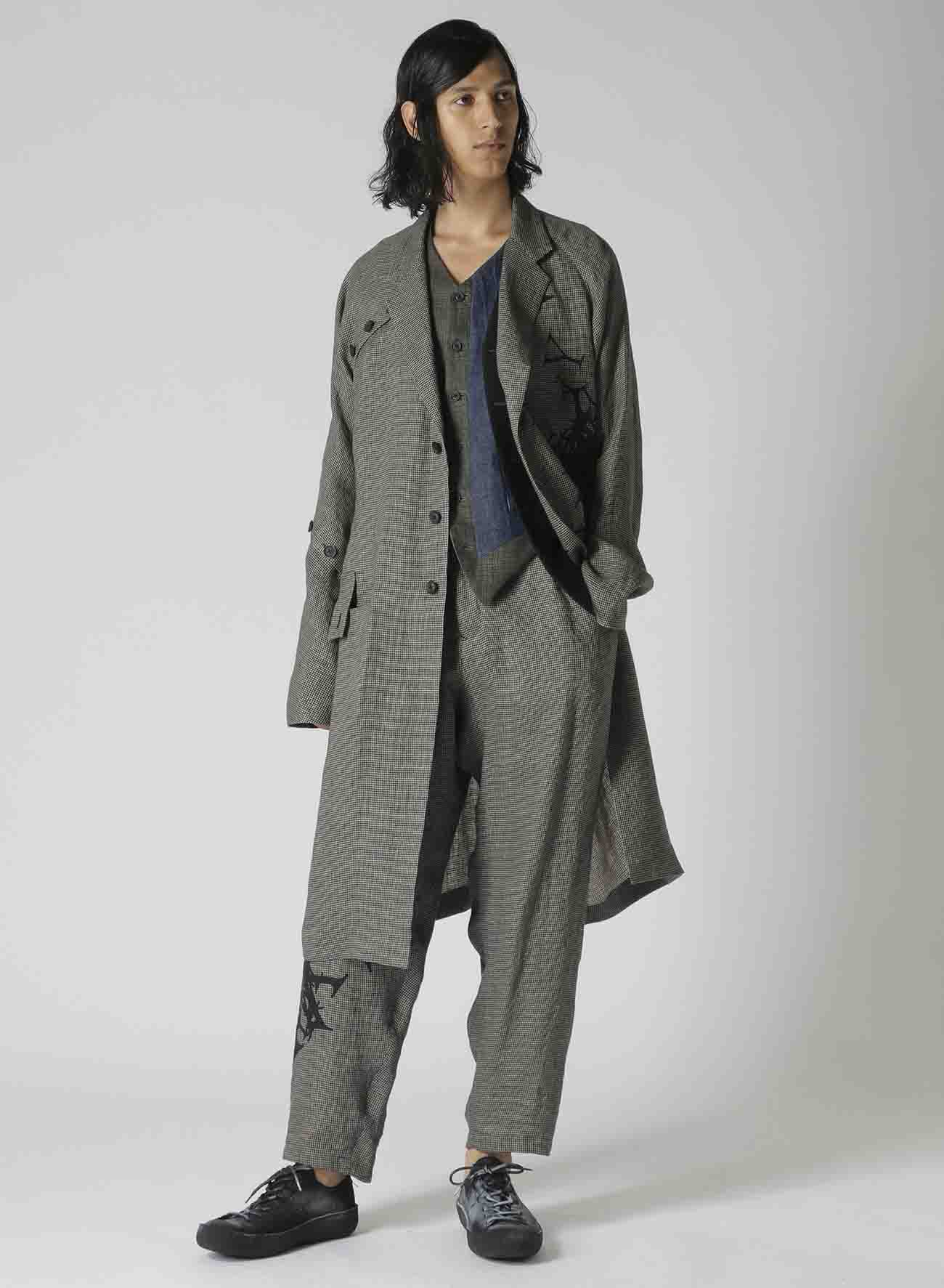Title: The Art of Wearing a Suit Jacket: A Comprehensive Guide
Wearing a suit jacket is an essential part of any formal outfit. However, it can be challenging to master the art of wearing one correctly. A suit jacket should be tailored to fit your body perfectly, and its sleeves should be long enough to cover your wrist. The lapels of a suit jacket should also be adjusted to complement your shirt's collar. When choosing a jacket, select one that is appropriate for the occasion and matches the rest of your outfit. To complete the look, pair your suit jacket with dress pants, dress shoes, and a tie. Remember to keep your shoulders relaxed and avoid overtailoring your clothing. By following these simple guidelines, you can effortlessly elevate your formal attire and make a lasting impression on those around you.
Introduction:
The suit jacket is an essential element of any formal attire, adding a touch of sophistication and class to any outfit. However, wearing a suit jacket properly requires more than just putting it on. It involves understanding the various aspects of the jacket, such as its fit, fabric, color, and accessories. In this comprehensive guide, we will delve into the intricacies of wearing a suit jacket, exploring its history, significance, and how to make it work for you.

History and Significance:
The suit jacket has a long and storied history that dates back to the late 19th century. Originally designed as a lightweight outer garment for men, it quickly became popular among business professionals who needed a versatile and practical piece of clothing for their daily routines. Over time, the suit jacket evolved to become a symbol of power, status, and success, worn by men across industries and professions. Today, it remains a staple of formal wear, often seen at weddings, business meetings, and other formal events.
Choosing the Right Fit:
The key to wearing a suit jacket well is finding the right fit. A well-fitted jacket should hug your body without being too tight or too loose, allowing you to move comfortably while maintaining a polished appearance. Here are some tips to help you choose the perfect fit:
1. Measure your chest and waist: Use a tape measure to determine your ideal chest and waist sizes. This will help ensure that the jacket fits snugly around your torso.
2. Try on different styles: Experiment with different styles of suit jackets, such as single-breasted, double-breasted, and notched lapels, to find the one that suits you best. Pay attention to how each style accentuates your body shape and personal preferences.
3. Consider the length: The length of your jacket should fall just above or below your hip bones, depending on your height and preference. If you're short, a longer jacket can elongate your frame, while taller individuals may prefer shorter lengths.
Fabric and Construction:
The quality of the suit jacket's fabric is crucial for both comfort and durability. Here are some factors to consider when choosing a fabric:
1. Weight: Lightweight fabrics, such as cotton or linen, are suitable for hot weather or casual occasions. Heavyweight fabrics like wool provide warmth and durability but can be uncomfortable in warm climates.
2. Thread count: The number of threads per square inch (TPI) is a measure of fabric quality. Higher thread counts generally result in smoother, more luxurious fabrics with better drape and durability.
3. Fabric texture: Different textures add visual interest and depth to a suit jacket. options include smooth woolen textures, rougher wool blends for a classic look, and more modern synthetic fabrics like microfiber.

4. Construction: The way the jacket is made can also affect its overall quality and durability. Look for details such as flatlock stitching, which reduces friction between fabric layers and ensures a neat finish, and reinforced seams at stress points like shoulder pads and buttons.
Color and Style:
The color of your suit jacket can have a significant impact on how you're perceived by others. Here are some tips for selecting the right color:
1. Darker shades like black, midnight blue, or navy are classic and timeless choices that exude professionalism and authority. They are also easier to match with other pieces in your wardrobe.
2. Lighter shades like charcoal gray or beige can add a touch of sophistication and flexibility to your outfit. These colors can also complement different skin tones and create a more relaxed vibe.
3. Patterns and prints: While solid colors are traditional and versatile, patterns and prints can add visual interest and personality to your suit jacket. Keep in mind that bold patterns may not be suitable for all occasions or audiences.
Accessorizing:
Accessories play an essential role in enhancing the overall look of your suit jacket. Here are some suggestions for accessorizing your suit jacket:
1. Pocket sqels: Adding pocket squares to your suit jacket can instantly update its style and give it a polished finish. Choose a pattern or color that complements your jacket's fabric and color scheme.
2. Cufflinks: Cufflinks are another subtle but effective accessory that can elevate the look of your suit jacket. Choose ones made of metal or precious stones that complement your personal style and taste.
3. Tie knots: A well-knotted tie adds a touch of elegance and sophistication to your ensemble. Experiment with different tie knots (e.g., four-in-hand or half-windsor) to find the one that suits you best.
Articles related to the knowledge points of this article:
The Overcoat and Down Jacket: Winter Fashion Essentials
Title: Matching a Deep Navy Shirt with a Tie: A Guide to Creating a Stunning Look
Title: Mastering the Art of Tie Color Combinations for a Polished Look



